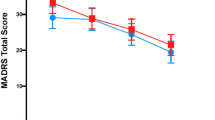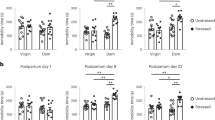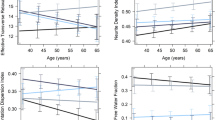Abstract
Background: The purpose of this preliminary study was to investigate HPA axis function in dissociation. Methods: Nine subjects with DSM-IV depersonalization disorder (DPD), without lifetime Posttraumatic Stress Disorder (PTSD) or current major depression, were compared to nine healthy comparison (HC) subjects of comparable age and gender. Results: DPD subjects demonstrated significant hyposuppression to low-dose dexamethasone administration and significantly elevated morning plasma cortisol levels when covaried for depression scores, but no difference in 24-hour urinary cortisol excretion. Dissociation scores powerfully predicted suppression whereas depression scores did not contribute to the prediction. Conclusions: Primary dissociative conditions, such as depersonalization disorder, may be associated with a pattern of HPA axis dysregulation that differs from PTSD and merits further study.
Similar content being viewed by others
Log in or create a free account to read this content
Gain free access to this article, as well as selected content from this journal and more on nature.com
or
References
Bernstein EM, Putnam FW . (1986): Development, reliability, and validity of a dissociation scale. J Nerv Ment Dis 174: 727–735
Cohen J . (1988): Statistical Power Analysis for the Behavioral Sciences, 2nd edition. Hillside, NJ, Lawrence Erlbaum Associates
De Bellis MD, Chrousos GP, Dorn LD, Burke L, Helmers K, Kling MA, Trickett PK, Putnam FW . (1994): Hypothalamic-pituitary-adrenal axis dysregulation in sexually abused girls. J Clin Endocrinol Metab 78: 249–255
First MB, Spitzer RL, Gibbon M, Williams JBW . (1995): Structured Clinical Interview for DSM-IV Axis I Disorders, Patient Version 2. New York, New York State Psychiatric Institute, Biometrics Research
Hamilton M . (1960): A rating scale for depression. J Neurol Neurosurg Psychiatry 23: 56–61
Lemieux AM, Coe CL . (1995): Abuse-related posttraumatic stress disorder: evidence for chronic neuroendocrine activation in women. Psychosom Med 57: 105–115
Pfohl B, Blum N, Zimmerman M . (1995): Structured Interview for DSM-IV Personality Disorders SIDP-IV. Iowa City, Iowa, Department of Psychiatry, University of Iowa
Putnam FW, Trickett P, Helmers K, Dorn L, Everett B . (1991): Cortisol abnormalities in sexually abused girls. Poster presented at the Annual Meeting of the American Psychiatric Association: Washington, D.C.
Simeon D, Gross BA, Guralnik O, Stein DJ, Schmeidler J, Hollander E . (1997): Feeling unreal: 30 cases of DSM-III-R depersonalization disorder. Am J Psychiatry 154: 1107–1113
Simeon D, Guralnik O, Gross S, Stein DJ, Schmeidler J, Hollander E . (1998): The detection and measurement of depersonalization disorder. J Nerv Ment Dis 186: 536–542
Stein MB, Yehuda R, Koverola C, Hanna C . (1997): Enhanced dexamethasone suppression of plasma cortisol in adult women traumatized by childhood sexual abuse. Biol Psychiatry 42: 680–686
Steinberg M . (1994): Structured Clinical Interview for DSM-IV Dissociative Disorders (SCID-D), revised. Washington, DC, American Psychiatric Press
van Ijzendoorn MH, Schuengel C . (1996): The measurement of dissociation in normal and clinical populations: meta-analytic validation of the Dissociative Experiences Scale (DES). Clin Psychol Rev 16: 365–382
Yehuda R . (1997): Sensitization of the hypothalamic-pituitary-adrenal axis in posttraumatic stress disorder. Annals NY Acad Sci 821: 57–75
Acknowledgements
Partly supported by NIMH grant MH-055582 to Dr. Simeon and NIH grant 5 MO1 RR00071 to the Mount Sinai General Clinical Research Center. Presented in part at the Annual Meeting of the American Psychiatric Association New Research, Chicago, May 2000.
Author information
Authors and Affiliations
Corresponding author
Rights and permissions
About this article
Cite this article
Simeon, D., Guralnik, O., Knutelska, M. et al. Hypothalamic-pituitary-adrenal Axis Dysregulation in Depersonalization Disorder. Neuropsychopharmacol 25, 793–795 (2001). https://doi.org/10.1016/S0893-133X(01)00288-3
Received:
Revised:
Accepted:
Published:
Issue date:
DOI: https://doi.org/10.1016/S0893-133X(01)00288-3



